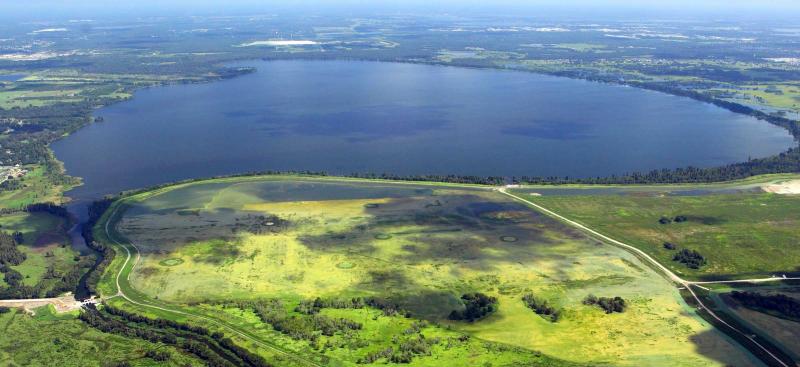A reservation defines a quantity of water set aside from the water-use permitting process for the protection of fish and wildlife or public health and safety.
Overview
In 2020, the District established a reservation for water that is stored in Lake Hancock and released to Lower Saddle Creek for recovery of minimum flows in the upper Peace River. A reservation sets aside water from consumptive use (i.e., from being included in a permitted water withdrawal) for the protection of fish and wildlife or the public health and safety. A minimum flow is the limit at which further withdrawals would be significantly harmful to the water resources or ecology of the area.
The established reservation is summarized in a report (see links on this page) that the District voluntarily had reviewed by a scientific peer review panel. The panel consisted of two independent, recognized experts in the fields of hydrology and engineering. These experts reviewed all scientific or technical data, methodologies, models, and scientific and technical assumptions used to support development of the proposed reservation.
Peer Review Panel Meetings and Public Input
Meetings conducted by the peer review panel occurred on November 15 and 21 and December 17, 2019. They included an initial, in-person meeting, with a field trip to Lake Hancock, Lower Saddle Creek and the Peace River, as well as web-based teleconferences facilitated from the District’s Brooksville office. In addition, a web forum was also established for peer review panel communication. The meetings and the web forum included opportunities for public comment on the review process.
The District prepared a response to the initial peer review report and an updated reservation report. The review panel subsequently prepared a final peer-review report for the Governing Board.
Additional Outreach Activities
Staff met with stakeholders to discuss the proposed reservation and to solicit feedback. A public workshop was held to provide information on the proposed reservation and solicit additional stakeholder input. Public comments were summarized and made available to the District's Governing Board to support its consideration and ultimately, its approval of the proposed reservation.

